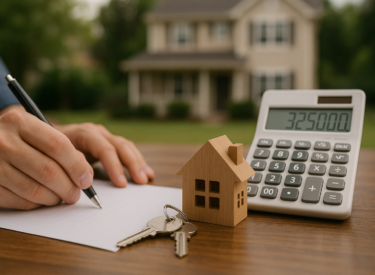
Key takeaways
Australia is facing a housing affordability crisis like never before, with soaring mortgage rates exacerbated by rising property prices. Fewer households than ever before can afford to buy a home.
Over the past year, two factors have collided to worsen the housing affordability situation: steep home price growth and elevated interest rates. As a result, households across the income distribution can now afford the smallest share of homes since records began in 1995.
The PropTrack report shows that the divide between high-income earners and everyone else is increasing, with middle and lower-income households struggling to keep up with rising costs. This has left a growing segment of the population locked out of the housing market.
New South Wales is the least affordable state in the country, with a median house price of $1.5 million in Sydney. Victoria and Tasmania aren't far behind, with a median-income household able to afford only 12% of homes sold in Victoria.
For first-home buyers, particularly younger Australians, saving for a deposit while also paying rent can feel like an impossible task. The deposit barrier is now another seemingly insurmountable challenge for many Australians.
While the outlook may seem bleak, there are some potential rays of hope. Lower interest rates may ease some of the pressure on borrowers, making housing slightly more affordable, but more fundamental, long-term changes are required to improve the housing market.
Australia is facing a housing affordability crisis like never before, with the latest data from the PropTrack Housing Affordability Report painting a stark picture of the challenges Australians face in buying a home.
According to Paul Ryan, Senior Economist at PropTrack, affordability has now reached its worst level on record.
This is not just a talking point—it’s a cold, hard fact.
The dream of home ownership, once the cornerstone of Australian life, is rapidly slipping away for an increasing number of people.
Even after a decade of rising property prices, the current affordability crisis is exacerbated by soaring mortgage rates, which are now at levels not seen since 2011.
The result?
Fewer households than ever before can afford to buy a home.

A perfect storm: rising prices and soaring interest rates
Over the past year, two main factors have collided to worsen the housing affordability situation: steep home price growth and elevated interest rates.
Nationally, the median home price has risen by a staggering $50,000 in just 12 months.
That’s a substantial increase for anyone trying to break into the market, but it’s especially challenging for first-time buyers or those on average incomes.
At the same time, mortgage rates have jumped to their highest point in over a decade, pushing borrowing costs higher and making it harder for households to service home loans.
With interest rates still hovering near these highs, households are faced with the daunting challenge of affording both the price of the property and the cost of borrowing.
This has led to the sharpest decline in housing affordability on record.
Households across the income distribution can now afford the smallest share of homes since records began in 1995.

The data is particularly alarming for middle-income families.
Ryan said:
“A median-income household, earning just over $112,000 a year, can now afford to purchase just 14% of homes sold across the country.
This is a significant drop from just three years ago when that same household could afford to buy 43% of homes on the market.”
This dramatic decline in affordability underscores how quickly conditions have deteriorated.
With fewer affordable options available, many households are being forced to either delay their home-buying plans or look at cheaper, less desirable locations—often far away from work, schools, and amenities.
The divide between high-income earners and everyone else
Perhaps the most telling aspect of the PropTrack report is the increasing divide between those in higher income brackets and everyone else.
To buy just half of the homes sold in Australia over the past year, a household now needs to earn at least $213,000 per year, putting them in the top 20% of income earners.

This shift has made homeownership largely the domain of the wealthy, squeezing out middle and lower-income households who are struggling to keep up with rising costs.
The rapid increase in home prices, coupled with the surge in mortgage rates, means that for many Australians, even dual-income households, buying a home has become unattainable.
Rising wages since the pandemic have done little to alleviate this pressure.
While incomes have gone up, they haven’t risen nearly enough to offset the twin forces of higher home prices and increased mortgage rates.
This leaves a growing segment of the population locked out of the market, unable to compete with higher-income earners who can absorb these cost increases.
State-by-state breakdown: where it’s toughest to buy a home
While housing affordability is a national issue, the PropTrack report reveals significant disparities across different states.
Unsurprisingly, New South Wales leads the pack in unaffordability, driven by Sydney’s eye-watering property prices.

Ryan commented:
“With a median house price of $1.5 million in Sydney, it’s no surprise that New South Wales is the least affordable state in the country.”
Median-income households in New South Wales can now afford less than 10% of the homes on the market, pushing many potential buyers out of the city and into more affordable, but less accessible, regional areas.
Victoria and Tasmania aren’t far behind.
Despite being lower than Sydney’s, Melbourne’s median home prices are still out of reach for many, with a median-income household able to afford only 12% of homes sold in Victoria.
Tasmania, once a more affordable option, has seen affordability plummet as well.
In fact, Tasmania is now the second least affordable state, with a median-income household able to buy less than 1 in 10 homes.
Interestingly, Western Australia stands out as the most affordable state in the country, despite recent price growth.
This relative affordability is attracting an increasing number of Australians to make the move west, contributing to a property boom in Perth.
For many, the opportunity to buy a home in WA remains one of the few viable paths to home ownership in today’s market.
The deposit barrier: a mountain too high for first-time buyers
It’s not just the price of homes and the cost of borrowing that’s shutting people out of the market—saving for a deposit has become another seemingly insurmountable challenge for many Australians.
According to the PropTrack report, for an average-income household, it now takes more than five and a half years of saving 20% of their income just to amass a 20% deposit for a median-priced home.

That’s before even considering the cost of mortgage repayments, stamp duties, and other associated costs of buying a property.
For first-home buyers, particularly younger Australians, the prospect of saving for a deposit while also paying rent can feel like an impossible task.
In many cases, it’s the deposit—not the monthly mortgage repayments—that is the biggest hurdle to entering the property market.
Any improvement on the horizon?
While the outlook may seem bleak, there are some potential rays of hope.
Lower interest rates, expected to arrive later this year, may ease some of the pressure on borrowers, making housing slightly more affordable.
However, as Paul Ryan points out, this relief will only be temporary unless more fundamental, long-term changes are made.
He further argues:
“Meaningful, long-term improvement will require structural changes to the housing market.
Lower rates may provide some short-term relief, but what’s really needed is an increase in the supply of homes.”
The solution, as many experts agree, lies in building more homes.
The National Cabinet’s target to build 1.2 million well-located homes over the next five years is a positive step, but it will require a coordinated national effort.
Encouragingly, some state governments have already begun ambitious zoning reforms, which could help unlock more housing supply in key areas.
Additionally, Ryan highlights the importance of better utilizing existing housing stock.
Australia’s current stamp duty system, which penalizes people for downsizing or relocating, has created inefficiencies in the housing market.
Reforming stamp duties could encourage more mobility and free up larger homes for growing families, rather than having them sit underutilized by empty nesters or retirees.














